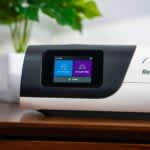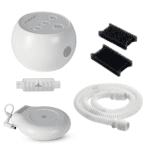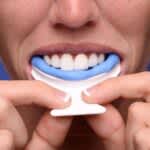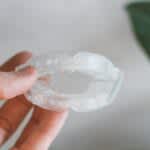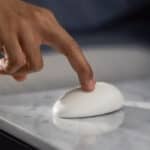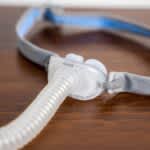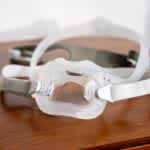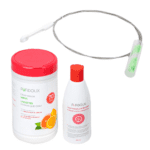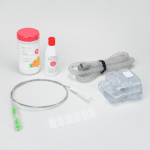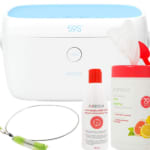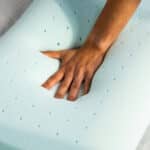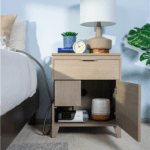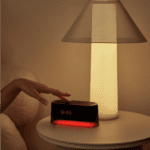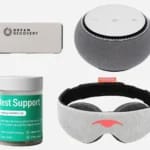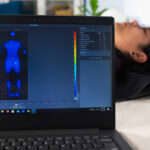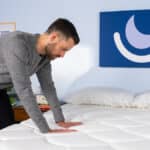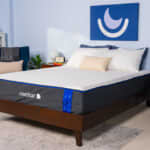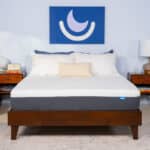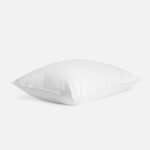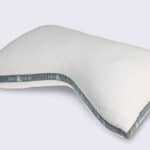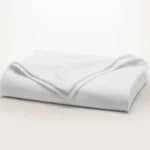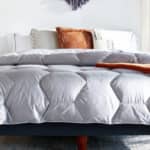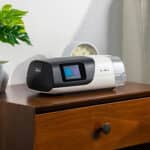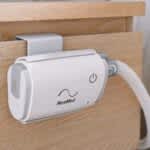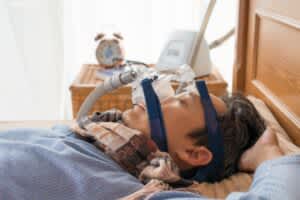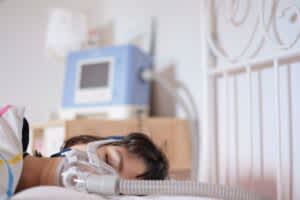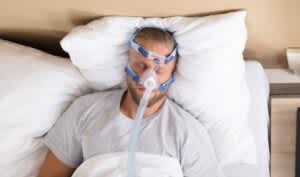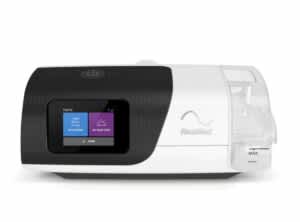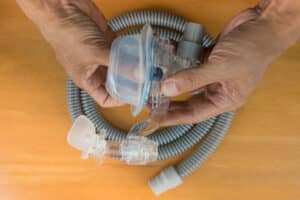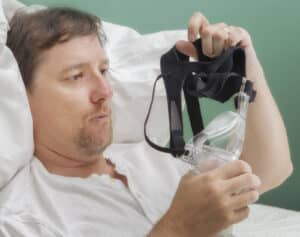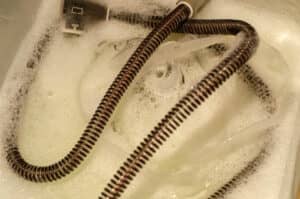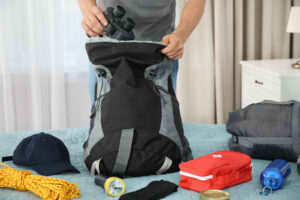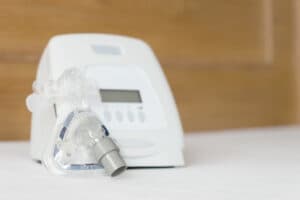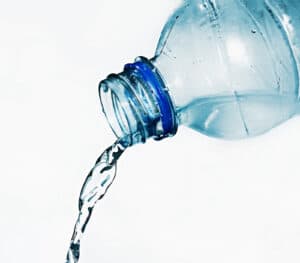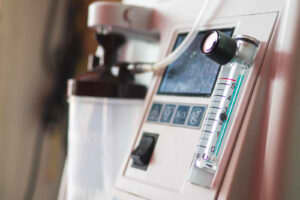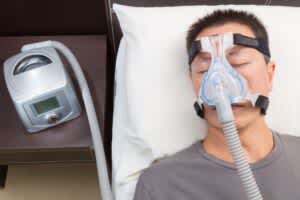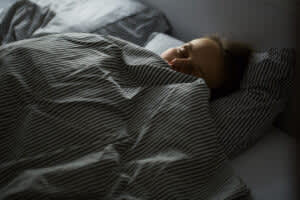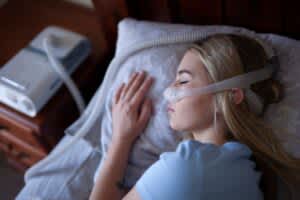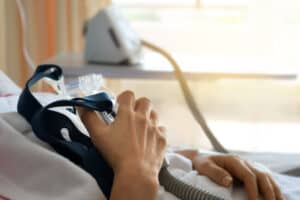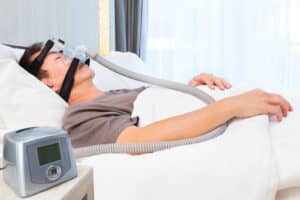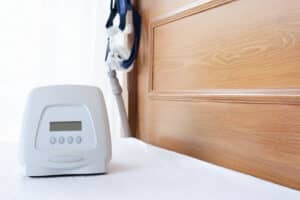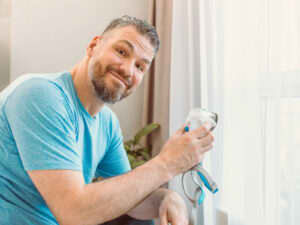Camping with a CPAP machine requires some planning, but with the right setup, it can be done. Whether you’re traveling in a recreational vehicle or sleeping in a tent, bringing your CPAP device allows you to continue receiving the benefits of continuous positive airway pressure therapy on your trip.
Considerations for camping with a CPAP machine vary depending on the situation. For example, you may need to look into bringing battery adapters if you’re staying at a campsite, or solar chargers if you’re backpacking.
We’ll cover how to plan your trip with a CPAP device, where to find CPAP-friendly campsites, and what equipment you need to camp with a CPAP machine.
What Do You Need to Consider If You’re Camping With a CPAP Machine?
When planning a camping trip with your CPAP machine, consider your mode of camping, the weather forecast, and the length of your trip. These factors affect what type of CPAP device and accessories you should bring.
Camping With a CPAP Machine
| Type of camping and length | If you have access to a vehicle or electrical outlets at your campsite, you can bring a rechargeable external CPAP battery. You may need an inverter or an adapter if you’re not using a traditional wall outlet. CPAP batteries typically last one or two nights. For longer hikes off the grid, a solar-powered battery fits nicely in a backpack and doesn’t require any power source apart from natural light. Make sure to check how many hours of direct sunlight the battery requires for a full charge and consider the weather forecast before relying on a solar charger for a long camping or backpacking trip. |
| Weather and climate | Batteries and CPAP devices are sensitive to moisture and extreme temperatures. Cold temperatures and higher altitudes may also affect the battery runtime. CPAP devices and batteries typically work up to 8,000 feet above sea level, but you may need to manually adjust the altitude settings as you ascend. Manufacturers list safe ranges for temperature, altitude, humidity, and air pressure in the user guide. |
| Extra CPAP batteries | CPAP machines don’t currently have the capacity to run on built-in batteries, but they can be plugged into an external battery for use off the grid. Check the user guide to see which external or multipurpose batteries are compatible with your CPAP device, and consider bringing extra batteries to provide a longer charge. The battery itself also needs recharging regularly, and this process takes time. To charge a battery via an alternative power source, you may need an inverter or converter. |
| CPAP humidifiers | A CPAP humidifier can make therapy more comfortable by reducing side effects like dry nasal passages, which may be especially useful if you’re camping in dry weather. Humidifiers require distilled water to run, meaning you may need to bring extra bottles with you. Additionally, humidifiers and heated tubing drastically diminish runtime if you’re powering your CPAP machine with a battery, and some humidifiers may not be compatible with batteries at all. If you’re backpacking with a CPAP device to a remote location and need to carry all your supplies, you may find it more practical to use a waterless humidifier. Also known as heat and moisture exchangers (HMEs), these small, disposable devices fit seamlessly into the CPAP tubing. They work by trapping the moisture in the air you exhale and adding it back to the air you breathe in. |
Electrical Access and Campsites
Campsites in U.S. state parks, national parks, and private campgrounds may offer options for electrical outlets, sometimes at an extra cost. Most campsites that accommodate RVs have electric outlets and RV hookups, and cabins typically come with electrical outlets.
More rarely, you’ll see campsites for tents that come equipped with electrical outlets. Some campgrounds offer shared outlets between two campsites or limited, low-amperage outlets specifically for recharging medical devices.
Look on the campground’s website to find information on electrical outlets and rules surrounding generator use.
Converters and Inverters for CPAP Machines
In order to connect your CPAP device or battery to a campsite outlet or your vehicle’s auxiliary power outlet, you may need an inverter or a converter. Inverters convert direct current (DC) to alternating current (AC), while DC-to-DC converters alter voltage so a power source can safely be used with a CPAP machine.
Be sure to use a converter or inverter that is compatible and safe for your CPAP machine and battery. Manufacturers should provide information on the best setup for your situation.
If you have the right converter or inverter, you can plug your CPAP machine directly into your vehicle’s auxiliary power outlet, just as you would with any other appliance. However, car and RV batteries are designed to recharge constantly while running, and they may become quickly drained if used to power a CPAP machine while the vehicle is turned off.
Should You Camp With a Travel CPAP Machine?
Travel CPAP machines are compact and lightweight, which makes them attractive when camping with limited luggage space. However, if you’re camping in an RV, it might be less hassle to simply bring along your regular CPAP machine.
Pros of a travel CPAP machine:
- Easier to pack
- Many are designed for use with waterless humidification systems
- May have camping-friendly features, such as a self-drying mode
Your everyday machine may be better if:
- You’re camping in an RV and have more room for supplies and personal items
- You’ve been prescribed a more advanced therapy setting that’s not available on a travel CPAP machine
- You can’t afford an additional travel machine or a second device isn’t covered by insurance
Portable Power for CPAP Machines
Choosing the right power source for your CPAP machine is essential to ensure it provides effective therapy. For camping trips in the backcountry, it’s especially important to find ways to power your CPAP machine.
Batteries
The most common type of external CPAP battery is a lithium-ion battery. These small, lightweight batteries charge quickly and are often designed to be compatible with CPAP machines as well as other devices. A similar concept is portable power stations, which are designed for durability in outdoor conditions and generally have a wider range of power inputs and outlets.
You can also use a stand-alone deep-cycle battery to recharge an external CPAP battery or power a CPAP machine directly. The battery should have a sufficiently large charge capacity and the appropriate inverter or converter.
Before purchasing batteries, double-check your user guide for compatibility and appropriate adapters.
Solar Chargers
Solar chargers are an ideal option for repowering CPAP batteries when camping in the backcountry. Since solar chargers convert sunshine into energy, they can be used virtually anywhere that has enough natural light. Most solar chargers fold up when not in use, so they take up little room in your backpack and won’t weigh you down.
Generators
Generators convert gasoline or propane into electricity, which you can use to recharge your CPAP battery during the day. Since generators are cumbersome and need fuel to run, they’re most realistic for people who are traveling in a vehicle. Generators emit carbon monoxide and must be used outside.
Campgrounds typically restrict gas generator use to certain hours or prohibit it altogether, as the noise can be disruptive. If you need to plug a CPAP machine directly into a generator, consider a solar generator, which is cleaner and quieter for overnight use.
Keeping Your CPAP Machine Clean
CPAP devices and accessories, including CPAP masks and tubing, require regular cleaning to ensure proper functioning and hygiene. When traveling to an area with limited resources, you’ll need to plan ahead.
- CPAP cleaning wipes: CPAP wipes are convenient when you have limited access to running water. Individually packaged wipes take up the least space, as you can pack the exact number you need. Remember to dispose of garbage in designated areas or take it back with you until you can dispose of it properly.
- Soaps: Humidifier chambers, tubing, CPAP masks, and reusable filters need washing at least once a week. If you have access to water, you can mix it with mild, biodegradable soap to clean these components. Ask if your campsite has dedicated dumping areas for wastewater. If there’s no dumping area, scatter the used water at least 200 feet from streams or lakes.
Water for a CPAP Machine
If you use a humidifier, you’ll need access to distilled water to refill the water chamber. You can pack bottles of distilled water or invest in a portable water distiller. Tap water and other unpurified water sources are not suitable for use in a CPAP machine, as they may contain microorganisms that can make you sick.
Ask the Sleep Doctor
Have questions about sleep? Submit them here! We use your questions to help us decide topics for articles, videos, and newsletters. We try to answer as many questions as possible. You can also send us an email. Please note, we cannot provide specific medical advice, and always recommend you contact your doctor for any medical matters.

